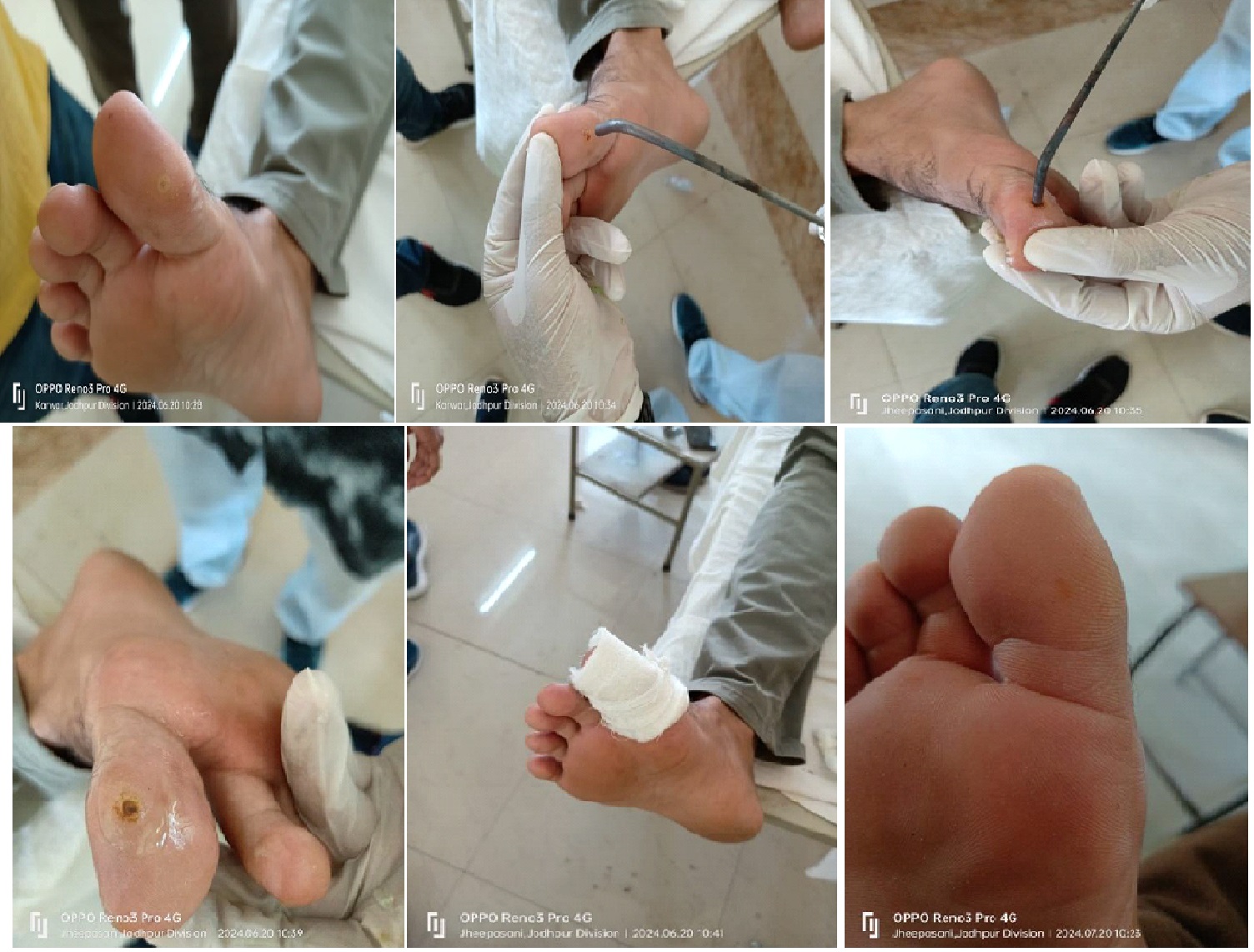Management of Corn Using Agnikarma
DOI:
https://doi.org/10.47070/ayushdhara.v11i3.1619Keywords:
Agnikarma, Corn, Clavus, Thermal cauterization, Ayurvedic treatment, Hyperkeratosis, Pain relief, Case studyAbstract
Corns (clavi) are a common painful condition caused by hyperkeratosis due to repetitive friction or pressure. Agnikarma, an Ayurvedic thermal cauterization technique, is traditionally used to treat various musculoskeletal and dermatological conditions. This case study evaluates the efficacy of Agnikarma in treating a corn on the sole of a patient's foot. Patient Profile: A 45-year-old male school teacher presented with a painful corn on the plantar aspect of her right foot. The corn had been persistent for six months, causing severe discomfort while walking or standing. The patient opted for Agnikarma after conventional treatments were discussed. Method: The corn was marked and the surrounding area cleaned. A heated Shalaka (metal rod) was applied to the corn in a circular motion to achieve a therapeutic burn. Post-procedure care included keeping the area clean and dry with regular dressing changes. Results: The patient experienced significant pain relief one week post-procedure, with the corn reducing in size by four weeks. By eight weeks, the corn had completely resolved with no recurrence or complications. The patient reported no discomfort and was able to resume normal activities. Conclusion: Agnikarma provided effective and immediate relief for the patient’s corn, showcasing its potential as a minimally invasive and cost-effective treatment. This technique promotes localized tissue necrosis and healing, making it a valuable alternative to conventional treatments, particularly for patients seeking prompt pain relief and reduced recurrence.
Downloads

Downloads
Published
Issue
Section
License
Copyright (c) 2024 AYUSHDHARA

This work is licensed under a Creative Commons Attribution-NonCommercial-ShareAlike 4.0 International License.


